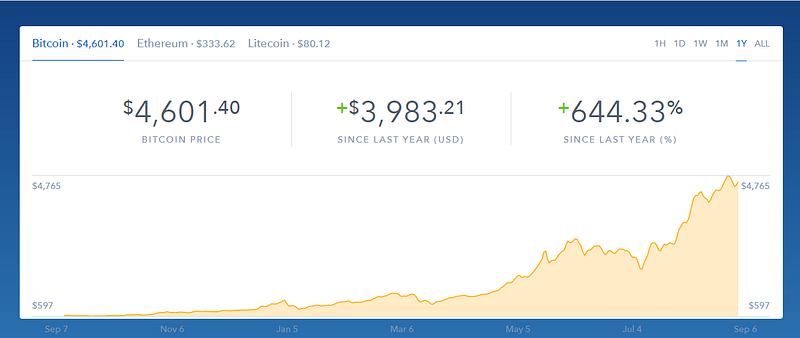Blog
The “B” Word meets the “E” Word — Blockchain and the Energy Sector
September 7, 2017
Post Author

Our interests pique at the mention of blockchain, an emerging technology that could soon redefine the way we quantify, store, and transfer financial value worldwide. The technology has been continuously developed and refined since 2008 to trade cryptocurrency securely across the interwebs without third party intermediaries (i.e. central banks). And while the growing value of cryptocurrencies like BitCoin, Ethereum, and others are beginning to turn heads, there are some huge differences between the “new” and “old” money that many are still getting used to. If you’d like to get to grips with this emerging financial technology, you might want to learn how to buy bitcoin to give you a good basis for using cryptocurrency in the future.
To name just a few, cryptocurrencies:
Have no physical form. Cryptocurrency exists only within the network in which it is recognized and traded.
Are managed differently. Transactions are approved by a decentralized network of “nodes” that validate each transaction. Once approved, a transaction cannot be erased from the blockchain.
Have no intrinsic value. Cryptocurrency is not redeemable for another type of commodity such as gold.
The technology is awesome and a bit scary at the same time?-?in some ways it’s more secure than the status quo because there is no single entity in control and no single point of failure in the blockchain. The data is embedded in the network as a whole and the chain stores information from every transaction since its genesis. However, because cryptocurrencies have no physical form or centralized regulatory agency, some problems have arisen with malicious computer hacking. People have in the past woken up to find their virtual coin “wallets” empty and there’s really nothing they can do about it. It’s recommended that you have basic computer literacy, strong passwords, and anti-virus software before you invest in any cryptocurrency.
With all that being said, many are betting the upsides of blockchain technology will win out over its initial security pitfalls. Last year (2016) over 1.4B was invested in blockchain technology, and the value of Bitcoin rose over 600% between September 2016 and September 2017. This caused many long-term investors to become very rich due to their cryptocurrency portfolio massively increasing in price. This valuation surge also caused many new and experienced traders to take a second look towards cryptocurrencies, especially bitcoin, as a successful trading opportunity and proceeded to look into the likes of Zipmexand other exchanges in order to purchase bitcoin as an investment.
Who’s “linking” to blockchain?
Peer-to-peer (P2P) networks: By enabling individuals to easily pay each other, blockchain facilitates decentralized and transparent P2P networks with lower transaction fees. One example is OpenBazaar, a blockchain enabled P2P version of eBay. Without a centralized regulatory authority “validating” buyers and sellers, personal reputation is a critical component to success for OpenBazaar participants and other similar P2P networks.
Data Managers: From governance to supply chain monitoring to file management, decentralized data storage through blockchain maintains ALL records and can provide huge value to any sector. Distributed ledgers of records over time can provide stronger proof for certification credentials, earnings statements, etc. Using blockchain, supply chains can track every piece in a product, where it was created, and how it was transformed along the way.
And here’s another huge application: GOVERNMENT ELECTIONS. Distributed database technology could bring full transparency to elections or other polls.
The Energy Sector
These previously mentioned benefits of data storage, transparency, AND MORE can apply to the energy sector when integrated with blockchain technology. For this reason, earlier this year, worldwide heavy hitters in the energy industry including Shell, Statoil, Tepco, and Centrica joined the recently created Energy Web Foundation?-?an alliance dedicated to bringing blockchain to the electricity grid. The foundation is a collaboration between the Rocky Mountain Institute (RMI) and Austrian blockchain developer Grid Singularity, and is funded by a variety of Corporate Affiliates who have donated $2.5M to the organization.
The Energy Web Foundation’s goal is to “accelerate the commercial deployment of technology in the energy sector.” They aim to have a publicly available product within the next 2–3 years. Their blockchain could seamlessly track not only payments, but also renewable energy certificates and electrons.
Did you know that in the US alone there are already over 10 different tracking systems for renewable energy certificates (also known as guarantees)? Additionally, each European country has their own and then Asia-Pacific has several more. As you can imagine, these disparate systems create headache and can lead to inaccurate reporting, particularly when certification credentials may vary across tracking systems.
Storing ledgers and certificates through blockchain can increase transparency on the generation of electricity sold by utility companies. Renewable energy generation can be easily tracked and credited to the utility and disclosed to the consumer, allowing all to know the exact grid mix at any time and the fair price for those electrons. It can also help domestic energy producers, i.e. homeowners with solar generation, track their consumption and excess generation, and resell their electricity back to the utility or others through peer-to-peer networks.
Distributing electricity directly to neighbors is more efficient than transmitting it over large distances.
Some startups are already piloting Neighborhood Microgrids managed through Etheruem-based smart contracts. These new “intelligent grids” could conceivably automate and monitor smart contracts and the redistribution of excess solar energy across neighborhoods. So for example, if you have overproduction from your own solar panels, the automated system will decide in real time the most effective redistribution of that energy across the microgrid and compensate you for it.
In fact, for emerging technologies such as Demand Response and Vehicle-to-Grid to work at scale, we’ll need the data storage and transaction processing capabilities of blockchain to efficiently track the immense web of electrons constantly going in and out of the electricity grid at different times and prices.
What do you think about cryptocurrency and blockchain? What applications do you think will be adopted and over what timescales? Leave your thoughts/comments below!
Additional Sources:














